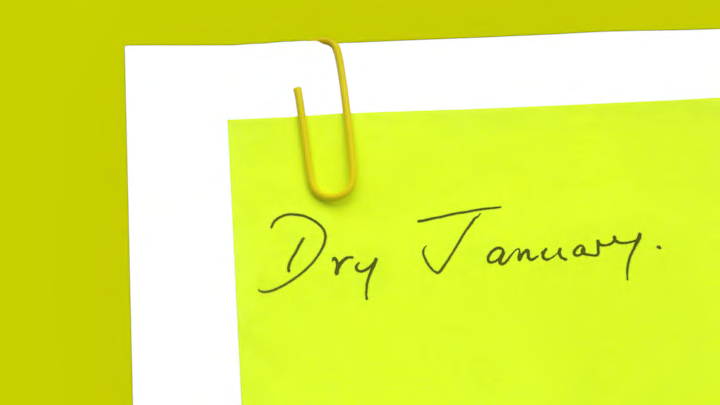The holidays are over, the Christmas tree is destined to become mulch, and the decorations are bound for the basement. For those of us in the Northern Hemisphere, the next several weeks will be like something out of Narnia, where it’s “always winter and never Christmas.”
It’s enough to make one reach for a drink ... unless, of course, you don’t. That’s where Dry January comes in.
What is Dry January?
Participating in Dry January means that no booze at all is to pass your lips for the entire calendar month of January. December 31? Wear a beer helmet and drink your height in tallboys if you like. February 1? Enter as many “drink all the shots in the world” contests as you want. But while the calendar says “January,” you just say “no” to any and all alcohol.
Who started Dry January?
Dry January was started by a British woman named Emily Robinson. She signed up for a half-marathon in February 2011 and decided to stay away from alcohol for the month of January in order to prepare. As well as feeling better in general, she found that her friends were oddly fascinated by the idea of a fully sober month. So she decided to do it again the next January, and took a job with the charity Alcohol Change UK. The first proper Dry January came in 2013, with the full force of the charity behind it and plenty of media coverage. More than a decade later, the trend has become massively widespread—along with its Southern Hemisphere equivalent, Dry July.
What’s the point of Dry January?
The hope is that people who embrace Dry January will feel a lot better by the end of the month. There are many reported health benefits associated with abstaining from alcohol, even for a month: weight loss, improved sleep, increased energy, and lower blood sugar are just a few of them. Also, booze isn’t cheap, so participants in Dry January can both save money and become motivated to put more cash aside going forward. On top of that, there are also psychological benefits to testing your willpower and feeling more comfortable about your relationship with alcohol.
And these benefits are ongoing: a study in 2014 found that, six months on, 72 percent of participants had maintained reduced levels of excessive drinking.
How popular is Dry January?
In just over a decade, Dry January has become incredibly popular, both formally—meaning signing up and registering online as a participant—and informally. In the UK, there were 3000 official participants during the event’s first year; the tenth annual event counted 130,000 official abstainers. Informally, there were more than 2 million people taking part in Dry January just two years after it began.
Dry January has become so popular, in fact, that beer companies often plan advertising campaigns around their alcohol-free offerings to help those customers going booze-free feel like they can still go out and socialize without alcohol. In the U.S., the number of people who take the pledge in January is thought to be in the millions.
